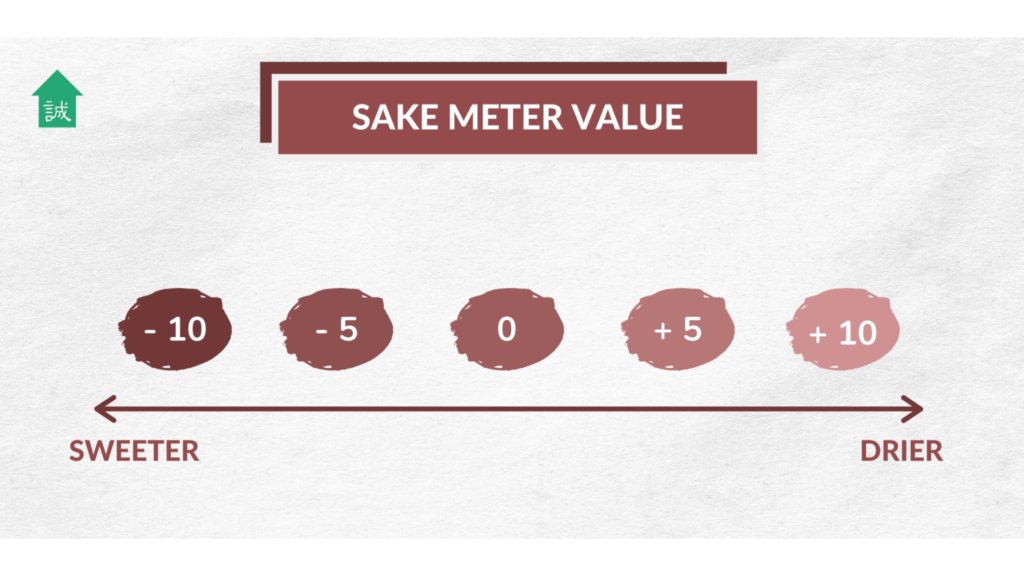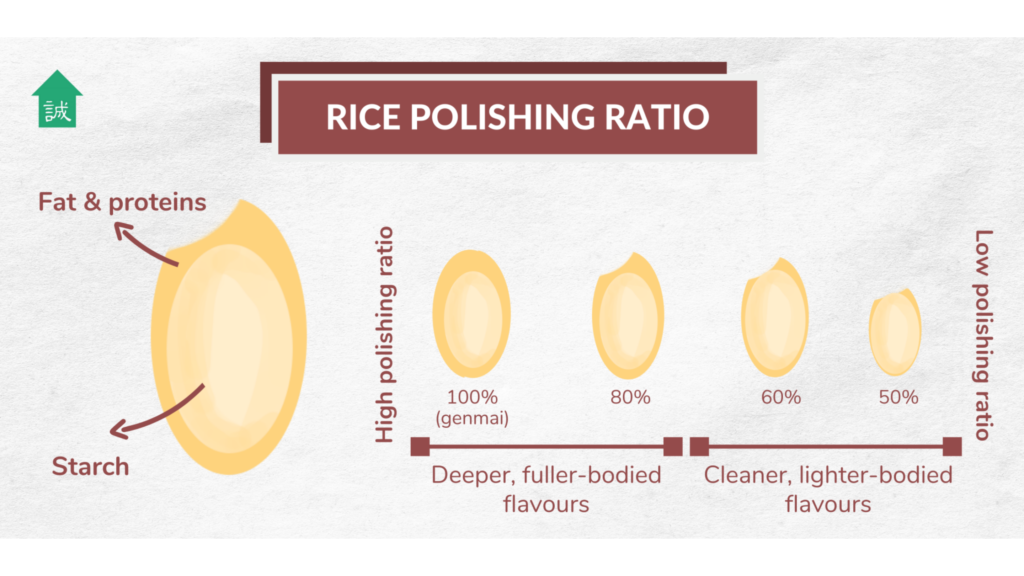So after knowing what is sake and how is it made in our previous blog, learn more about sake in our second part and learn what is Sake Meter Value (SMV) and rice polishing ratio to better understand your sake labels and to elevate your sake drinking experience.
Sake Meter Value (SMV)

Did you know that the taste of sake can be measured in numbers? The Sake Meter Value (SMV – 日本酒度) measures how dry or sweet the sake is and it is based on an open-ended scale of positive and negative numbers. Dry sake is measured on the positive scale and sweet sake is measured on the negative scale.
What the SMV actually measures is the density of sake compared to water, The higher the positive number, the drier it becomes and vice versa. These figures are often indicated on a sake’s back label. Do note that different brands with the same SMV may be different from each other. SMV is only intended as a reference on how dry or sweet a sake might be. This is so you can determine which kind of sake is better suited for your tastebuds!
Rice Polishing Ratio

Japanese sake is made with rice that has been polished down. The rice polishing ratio is the percentage of the rice that remains after the outer layer of the genmai is polished off. The husk and outer layer contain more protein and fats than the inner portion of the grain. This can produce undesirable aromas and negative flavours in sake. Sake made with rice of a lower rice polishing ratio is cleaner and light-bodied.
Most sake requires a certain level of polishing ratio in order to be classified (e.g. daiginjyos vs ginjyos). Learn more about how the rice polishing ratio affects the classifications of sake here.


